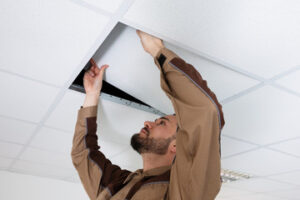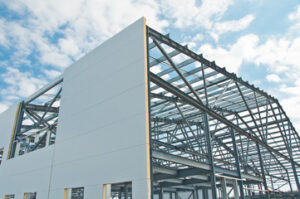Identifying pests helps create a plan for controlling them. Generally, this means knowing the pest’s life cycle and where it lives in order to target specific control measures more effectively.

Physical or mechanical controls include sticky barriers, traps and bait stations. Keeping areas clean and eliminating sources of food, water and shelter can prevent pests from developing and spreading. Reach out to Pest Control O’fallon MO for expert assistance.
Pests pose health and safety risks to people and pets, as well as damage structures and spoil food. Hiring a professional pest control company to identify and correct the conditions that lead to infestations is one way to prevent problems. Preventative measures include reducing the number of available food sources, removing shelter, and sealing gaps and cracks. Regular indoor and outdoor inspections by trained specialists can spot problem areas, such as holes in the walls or roof, and stop infestations before they get out of hand.
Pest control professionals can use several methods to prevent pests, including mechanical exclusion, biological control, and chemical controls. Biological control involves the use of natural enemies (predators, parasites and pathogens) to reduce the population of a pest or to prevent it from harming plants or animals. This method usually requires a time lag between the increase in the pest’s enemies and the reduction in its population. It may also involve introducing new enemies or altering existing ones to make them more effective.
Chemical controls can involve the use of pesticides to kill or repel a pest. These can be used in conjunction with mechanical and biological controls to achieve optimal results. They can be highly effective, but can also cause a great deal of environmental and human discomfort. It is essential to follow all state, federal and local laws governing the use of pesticides.
Some pests, such as cockroaches and rodents, spread disease and other harmful substances through their droppings. Others, such as mosquitoes and fleas, can cause unpleasant itching, rash, allergic reactions and a host of other health issues.
Clutter and sloppy maintenance can provide breeding, feeding and hiding places for pests, so regularly dispose of trash and keep building and office spaces clean. Clutter can also limit the effectiveness of pest traps and zappers, so eliminate stacks of paper, cardboard, and newspapers.
Moisture is a major attraction for some pests, so remove moisture sources by keeping air conditioning and vents working properly, repairing leaky pipes and appliances, and using dehumidifiers. In addition, it is a good idea to keep plants and shrubbery away from buildings to prevent the entry of pests through branches or roots.
Suppression
Pest control focuses on keeping pest numbers low enough to prevent damage and to make the remaining damage tolerable. This is done by prevention and suppression. Prevention tactics keep pests from reaching their harmful levels by limiting their food, water, shelter, and other requirements. These tactics may include sanitation, cultural practices, and genetic, biological, and mechanical controls.
Sanitation tactics can reduce the food and shelter for pests by cleaning or removing contaminated materials from areas where they are found. Plowing, crop rotation, cleaning tillage and greenhouse equipment, proper waste management, and adjusting irrigation schedules are examples of sanitation practices that can reduce pest populations.
Many insects have natural enemies that kill them or limit their population sizes, including predators, parasitoids, and pathogens. These natural forces often have a more important effect on pest populations than human activities do. Increasing the population of a pest’s natural enemies may be as simple as releasing birds to eat the pest or as complex as engineering microbial solutions engineered from bacteria that are sprayed on the soil surface where they bind to an insect’s toxins and cause it to die.
Several cultural practices can reduce pest populations by making the environment less favorable for them, including reducing the available food and water, eliminating shelter, and changing the conditions that promote their growth. Cultural control methods may be as simple as adjusting a plant’s location in the field or as complex as introducing new species to an area that can compete with a pest for resources.
Chemicals can be used to directly impact pest populations, but they are most effective when combined with other control measures. These other control measures can include physical or mechanical controls, such as traps, pheromones, and habitat modifications; cultural practices, such as crop rotation, plowing, and weeding; and genetic, biological, and mechanical controls, such as nematodes (microscopic worms that eat grubs), disease-causing microbes, and sterile insects. Chemicals should be used sparingly, with caution, and only when needed for a specific pest problem.
Eradication
The goal of pest control is to protect plants, animals and humans from damage. Pests can spoil crops, contaminate food and create discomfort or health hazards for people living in buildings or on properties where pests are present. They can also contaminate water supplies and erode soil. Pests can also spread diseases. They can carry and transmit diseases caused by vectors (flies, mosquitoes, hornets, ticks), microbes (fungi, bacteria, yeasts) or viral and bacterial agents. In addition, pests can degrade structures and damage landscaping.
Eradication is a more comprehensive approach to pest control that seeks to eliminate a target organism at the local, regional or global level. This involves a concerted effort by governments, organizations, private businesses and individuals. It is usually accompanied by a significant investment of financial and human resources. Eradication programs may be successful, but they are difficult and time consuming to implement. A variety of factors can lead to failure, including lack of adequate funding and the inability to reach targeted populations at all levels of an organization.
When attempting to eradicate pests, it is important to know how and when the chemicals you are using work. For example, some pesticides kill the pests they are supposed to target by poisoning them or blocking their nerve endings. In other cases, the chemical might leave a residue that gradually loses its effectiveness. Rotating different types of pesticides and limiting their use to the times when they are most effective can help reduce resistance.
Other pest control techniques include natural, cultural or biological controls. Natural controls involve introducing a pest’s natural enemies to the environment to control its population. Examples include the release of parasitoids or predators or the introduction of genetically modified plants that have a specific gene that confers resistance to a pest.
Many people are tempted to take a knee-jerk reaction to a pest problem and rush out to buy insecticide. Before doing so, you should try other methods of controlling the pest, if possible. Several kinds of pests, such as rodents and cockroaches, can be controlled with baits or traps rather than spraying them with chemicals. And don’t forget: Pesticides are toxic for people as well as pests, especially children, older adults and those with compromised immune systems.
Monitoring
Pests pose a threat to food safety and quality and damage buildings and products. They carry and spread disease-causing pathogens such as bacteria and viruses, including those that cause food poisoning; contaminate foodstuffs by touching them or urinating on them; destroy packaging materials; and physically damage goods and equipment. In addition, pests can be a source of discomfort to employees and trigger allergy and asthma symptoms in some people.
A pest control program can reduce the risk of pest infestation by implementing preventive and monitoring techniques. For example, sources of water in and around facilities should be eliminated or properly managed; areas where pests could hide or nest should be inspected; and the facility’s cleanliness should be maintained. An integrated pest management (IPM) approach combines prevention, suppression and eradication tactics to minimize the use of chemicals, while maintaining optimum yield and product quality.
To effectively monitor pests, managers need to know the type and quantity of pests in an area. This can be accomplished by using a variety of devices, including sticky boards, fly traps, pheromone traps and rodent bait stations. Observing these devices on a weekly, monthly or quarterly basis and trending the results allows managers to determine if a pest problem is reducing or increasing in severity.
The information collected can also help identify conditions that may be contributing to a pest problem. For example, if rodents are infesting a facility, the food storage areas need to be inspected to determine what food is being stored there and if there are odors that might attract them. In addition, proper maintenance of screens and barriers to prevent pests from entering the facility may be necessary.
Pest identification is critical in developing a pest control strategy because different types of pests require different actions to be taken to control them. For example, there is a zero tolerance for rats, mice and cockroaches in food processing environments because they contaminate food, can transmit disease by droppings and urine, cause structural damage to the facility and aggravate allergies in some people.
On the other hand, aphids are a common pest of garden vegetables and fruit trees because they feed on the leaves and buds and can damage the crop by chewing on the stems and branches. Appropriate action levels are set for this pest based on government, state and county health regulations.

